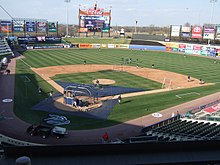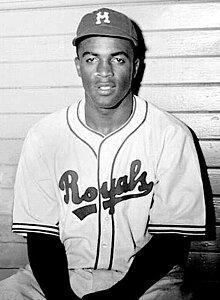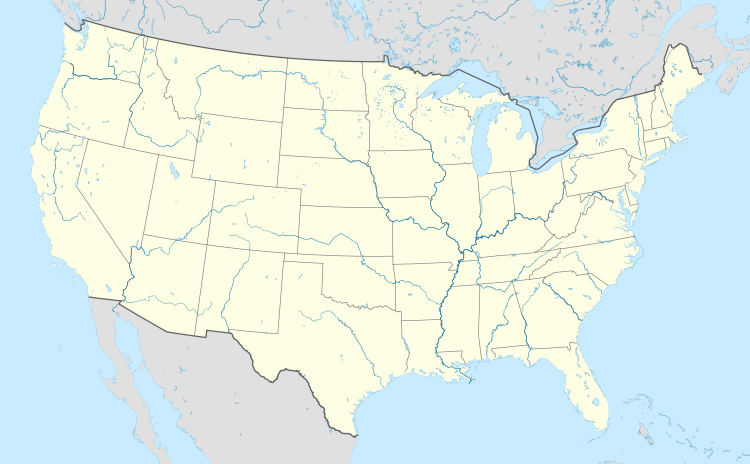
Triple-A (baseball)


Triple-A (officially Class AAA[1]) has been the highest level of play in Minor League Baseball in the United States since 1946. Currently, two leagues operate at the Triple-A level, the International League (IL) and the Pacific Coast League (PCL). There are 30 teams, one per each Major League Baseball (MLB) franchise, with 20 in the IL and 10 in the PCL. Triple-A teams are generally located in smaller cities who do not have major sports league teams such as Syracuse, Toledo, Reno and Omaha as well as larger metropolitan areas without MLB teams that may also have teams in other major sports leagues, such as Austin, Jacksonville, Columbus, Buffalo, and Indianapolis. Four Triple-A teams play in the same metro areas as their parent clubs.[notes 1]

All current Triple-A teams are located in the United States; before 2008, some Triple-A leagues also fielded teams in Canada,[2] and from 1967 to 2020 the Mexican League was classified as Triple-A. Reasons for the relocation of these teams were solely because of costs and attendance. Other than the current two Triple-A leagues, only three other leagues have ever held the classification.

History

Prior to 1946, the top level of Minor League Baseball was Double-A, which had been established in 1912.[3][4]: 236 The Triple-A classification was created before the 1946 season, and began with all three leagues then in Double-A moving up to the new level:[4]: 15

- American Association (AA)
- International League (IL)
- Pacific Coast League (PCL)
This structure persisted for the next 75 years with only a few changes:

- 1952–1957: The PCL was classified as "Open" for these six seasons, in anticipation of it potentially becoming a third major league; once the Brooklyn Dodgers and New York Giants relocated from New York City to California, the PCL returned to Triple-A for the 1958 season.[4]: 16, 497
- 1963–1968: The AA did not operate during these six seasons.[4]: 521, 541
- 1967: The Mexican League received Triple-A classification;[4]: 537 it had previously been Double-A since 1955[4]: 481
- 1979: The Inter-American League debuted with a Triple-A classification; the league disbanded in June[4]: 587
- 1998: Teams from the AA, which disbanded after the 1997 season, were added to the PCL and IL[5]
The IL, PCL, and Mexican League continued as Triple-A leagues until Major League Baseball reorganized the minor leagues prior to the 2021 season. At that time, the IL and PCL were temporarily renamed Triple-A East and Triple-A West, respectively. The Mexican League continues to operate, independently. Following MLB's acquisition of the rights to the names of the historical minor leagues, they announced on March 16, 2022, that the leagues would once again be called the International League and the Pacific Coast League, effective with the 2022 season.[6]

Countries
While all current and the majority of past Triple-A teams have been located in the United States, Triple-A teams have also been based in:[4]: 104–106

- Canada: teams including the Montreal Royals and Ottawa Lynx of the IL and the Calgary Cannons, Edmonton Trappers, and Vancouver Mounties of the PCL
- Cuba: the Havana Sugar Kings were members of the IL from 1954 to 1960
- Dominican Republic: the short-lived Inter-American League had a team based here in 1979
- Mexico: all Mexican League teams
- Panama: one Inter-American League team in 1979
- Venezuela: two Inter-American League teams in 1979
Purpose

The main purpose of Triple-A teams is to prepare players for the major leagues. In 2010, ESPN wrote:[7]

Winning is nice, but secondary. It's much more important for a young prospect like outfielder Xavier Paul to get regular at-bats against lefties, or work on dropping down sacrifice bunts with a runner on first, than it is to take three of four from the Portland Beavers.[7]
Both young players and veterans play for Triple-A teams:

There are the young prospects speeding through the organization on the fastest treadmill, the guys who used to be young prospects who are in danger of topping out in Triple-A, the 30-somethings trying to get back to the majors after an injury or a rough patch, and the guys just playing a few more seasons because someone still wants them and they still want to.[7]
Most, if not all, of the players on an MLB team's expanded roster who are not currently on the team's active roster are assigned to the team's Triple-A club. Expanded rosters consist of 40 players, while active rosters generally consist of 26 players as of the 2021 season. Most Triple-A teams are located geographically close to their MLB parent club, as activating a Triple-A player as an injury replacement is a common occurrence.

The term "AAAA player," pronounced "four-A" or "quadruple-A," refers to a player who is consistently successful when playing for Triple-A teams, but is not successful at the major league level. The term is usually used derisively and has itself been criticized as flawed.[8][9] Major league team executives and managers disagree whether AAAA players exist.[10]

Leagues
Teams at this level are divided into two leagues: the International League and the Pacific Coast League. The International League fields teams primarily in the Eastern United States, while the Pacific Coast League fields teams mostly in the Western United States. Each of the 30 major league teams has an affiliation with one Triple-A team in the United States.

Current teams
International League

Pacific Coast League

Triple-A All-Star Game

The Triple-A All-Star Game was a single game held between the two affiliated Triple-A leagues—the International League and the Pacific Coast League. Each league fielded a team composed of the top players in their respective leagues as voted on by fans, the media, and each club's field manager and general manager.[11] The event took place every year since 1988 when the first Triple-A All-Star Game was played in Buffalo, New York. Prior to 1998, a team of American League-affiliated Triple-A All-Stars faced off against a team of National League-affiliated Triple-A All-Stars.

Traditionally, the game was held on the day after the mid-summer Major League Baseball All-Star Game.[12] Such games mark a symbolic halfway-point in the season, despite occurring later than the actual halfway-point of most seasons. Both Triple-A leagues shared a common All-Star break, with no regular-season games scheduled for two days before the All-Star Game itself. Some additional events, such as the All-Star Fan Fest and Triple-A Home Run Derby, were held each year during this break in the regular season.[13]

While the 2021 schedule originally included a three-day All-Star break of July 12–14,[14] this was removed after Opening Day was pushed back one month.[15] Team schedules for the 2021 season were subsequently issued without an All-Star break.[16]

Triple-A Championship
Beginning in 2006, the annual Triple-A National Championship Game was held to serve as a single championship game between the champions of the International League and Pacific Coast League to determine an overall champion of Triple-A baseball. It was originally held annually at Chickasaw Bricktown Ballpark in Oklahoma City, and known as the Bricktown Showdown.[17] Starting in 2011, the game was held in a different Triple-A city each year.[18] Previous postseason interleague championships include the Junior World Series (1932–34, 1936–62, 1970–71, 1973–74), Triple-A World Series (1983, 1998–2000), and Triple-A Classic (1988–91).

For the 2021 season, in place of the National Championship Game, Minor League Baseball extended the Triple-A regular season to October 3,[19] with league champions determined based on regular-season records through the original end date of the season (September 19 for Triple-A East, and September 21 for Triple-A West).[20] The final 10 games of the season, played after those dates, were deemed the "Final Stretch", with the team posting the best winning percentage during that period (the Durham Bulls, who went 9–1) winning a cash prize.[20][21] Since the 2022 season, the Triple-A National Championship Game has been played between the champions of the International League and the Pacific Coast League.[22] In 2023, the Triple-A Championship game was played at the Las Vegas Ballpark. The winner of this game were the Norfolk Tides.

Pace-of-play initiatives
As a part of professional baseball's pace of play initiatives implemented in 2015, 20-second pitch clocks entered use at Triple-A stadiums in 2015.[23] In 2018, the time was shortened to 15 seconds when no runners are on base. Other significant changes implemented in 2018 included beginning extra innings with a runner on second base and limiting teams to six mound visits during a nine-inning game.[24] For the 2019 season, the number of mound visits was reduced to five, and pitchers were required to face a minimum of three consecutive batters unless the side is retired or the pitcher becomes injured and is unable to continue playing.[25]

Timeline of AAA baseball leagues

Footnotes
References
- ^ The Official Professional Baseball Rules Book (PDF). New York City: Office of the Commissioner of Baseball. 2021. p. 10. Retrieved May 1, 2021 – via mlbpa.org.
- ^ "Lynx are outta here: Team sold, will move to U.S." www.canada.com. Ottawa Citizen. April 13, 2016. Archived from the original on November 19, 2014. Retrieved September 20, 2014.
- ^ "National Commission Grants Minor Leaguers Everything Asked For: Big Moguls of Baseball...Establish Much Wanted Class AA". The Philadelphia Inquirer. January 5, 1912. p. 10. Retrieved April 14, 2021 – via newspapers.com.
- ^ a b c d e f g h Johnson, Lloyd; Wolff, Miles, eds. (2007). The Encyclopedia of Minor League Baseball (Third ed.). Baseball America. ISBN 978-1932391176.
- ^ "Notable Events in American Association History". Triple-A Baseball. Retrieved October 22, 2019.
- ^ "Historical league names to return in 2022". milb.com. Minor League Baseball. March 16, 2022. Retrieved March 29, 2022.
- ^ a b c Shelburne, Ramona (September 1, 2010). "John Lindsey waits for his chance". ESPN. Archived from the original on September 6, 2010. Retrieved September 28, 2010.
- ^ Stoltz, Nathaniel (April 2, 2008). "Quadruple-A and the Garbage Player Phenomenon: An Exercise in Futility". Bleacher Report. Retrieved April 30, 2022.
- ^ Yellon, Al (January 12, 2012). "The Top Ten Quad-A Hitters". SBNation.com. Retrieved April 30, 2022.
- ^ Goldstein, Kevin (January 11, 2012). "Future Shock: Do Quad-A Players Exist?". Baseball Prospectus. Retrieved April 30, 2022.
- ^ Wild, Danny (May 30, 2014). "Voting begins for Triple-A All-Star Game". Minor League Baseball. Archived from the original on August 25, 2014. Retrieved August 19, 2014.
- ^ "Omaha Storm Chasers and Werner Park to Host 2015 Triple-A Baseball All-Star Game". Omaha Storm Chasers. Minor League Baseball. March 5, 2014. Archived from the original on March 15, 2014. Retrieved August 19, 2014.
- ^ "Durham Lands 2014 Triple-A ASG". Minor League Baseball. February 20, 2013. Archived from the original on March 22, 2014. Retrieved August 19, 2014.
- ^ "Bisons Unveil 2021 Playing Schedule, Opening Day Set for April 6 at Sahlen Field". Buffalo Bisons. Minor League Baseball. February 18, 2021. Retrieved February 18, 2021.
- ^ Harrigan, Thomas (March 2, 2021). "Triple-A Start Delayed; Alternate Sites to Return". Major League Baseball. Retrieved March 3, 2021.
- ^ "Printable Schedule". MiLB.com. Worcester Red Sox. Retrieved May 5, 2021.
- ^ "Bricktown Showdown To Determine Triple-A Baseball Champion" (PDF). Triple-A Baseball. July 12, 2006. Archived (PDF) from the original on March 4, 2016. Retrieved August 17, 2014.
- ^ Hill, Benjamin (February 8, 2011). "Isotopes to Host Triple-A Championship". Minor League Baseball. Archived from the original on August 19, 2014. Retrieved August 17, 2014.
- ^ Heneghan, Kelsie (July 1, 2021). "Playoffs return to the Minor Leagues". MiLB.com. Retrieved July 1, 2021.
- ^ a b Richard, Kevin (July 14, 2021). "MiLB turns Triple-A extended season to tourney–kinda". ballparkdigest.com. Retrieved July 15, 2021.
- ^ "Durham claims Triple-A Final Stretch championship". MiLB.com. October 4, 2021. Retrieved October 4, 2021.
- ^ "Las Vegas to Host Inaugural Triple-A Triple Championship Weekend". Minor League Baseball. May 3, 2022. Retrieved May 3, 2022.
- ^ Jackson, Josh (January 15, 2015). "Triple-A, Double-A to Implement Pitch Clock". MILB.com. Archived from the original on April 17, 2015. Retrieved April 20, 2015.
- ^ "MiLB announces pace-of-play rules for 2018". MILB.com. March 14, 2018. Archived from the original on March 15, 2018. Retrieved March 15, 2018.
- ^ "MiLB announces pace-of-play rules for 2019". MILB.com. March 29, 2019. Archived from the original on March 29, 2019. Retrieved March 29, 2019.
External links
See what we do next...
OR
By submitting your email or phone number, you're giving mschf permission to send you email and/or recurring marketing texts. Data rates may apply. Text stop to cancel, help for help.
Success: You're subscribed now !



